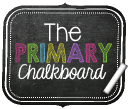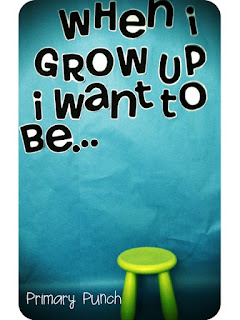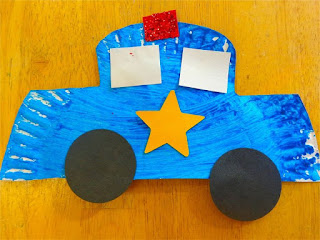Hi everyone! I am so excited today is my blogging day at Primary Chalkboard! I am
Heather from 2 Brainy Apples, and I am so excited to be teaching middle grades social studies this year! There is a LOT of content in our 6th grade SS curriculum. Lots of facts, lots of geography, lots of everything! And being an ex-elementary teacher, I believe that integration of reading into social studies is a non-negotiable. But reading passage after passage can get downright BORING. Even if the content is interesting, my students are sitting through 7 55-minute classes a day. If they are with me first thing in the morning, they may not mind sitting and reading....but, if they are with me at the end of the day, this is the last thing they want to do. And I totally understand how they feel. How do we feel after an all day professional development or meeting where we sit most of the time? I am ready for a nap! Or I am so focused on how much my bum hurts, I don't pay much attention. Knowing that reading is necessary, I decided to mix things up a little bit for my kiddos to keep them engaged and attentive to what they are reading, as well as having them look forward to reading about social studies content.
I like to write my own passages for the social studies content I have to teach. It allows me to make sure I include everything my students should know, I can leave out unneeded info, and I can add in fun facts that they may not have to learn, but it sure does make reading it a whole lot more fun! Even though I write the passages, I do get that my students may not be as excited about reading them as I would like. We do a lot of close reading, too, and this can be exhausting on their minds! I am on the team that doesn't believe in making my students close read everything I put in front of them. OVERLOAD. Some days my students might close read a paragraph. Other days they may close read half of the passage. Some days they will close read all of the passage. The goal is to get students to close read all on their OWN, without me having to tell them to do it. Easing them into, not forcing it will help them see how much close reading does help them understand the text, which will result in students choosing to close read the entire text without prompting be me. Lofty goal? Yes. Totally realistic? Absolutely! Has this happened in the past? Yep!
Movement Reading

One way I bring novelty into reading is by taking the passage my students need to read and cutting apart the paragraph. Then I hang each paragraph in a different place in our hallway for them to find.
They are still reading the passage, completing the activities that go along with it, but they are moving about the hallway. There's something about just being up and moving, reading one paragraph at a time that really engages them! I do this with passages that have paragraphs that don't need to be read in chronological order. Otherwise it would be very difficult for the students to glean the meaning from the text. One passage I did this with was the passage I wrote about air pollution in the United Kingdom (one of our standards addresses environmental issues). I wrote the passage with 4 headings: overview of air pollution, sources of air pollution, effects of air pollution, what the UK is trying to do to solve the issue of air pollution. There ended up being 3 paragraphs about the effects, 2 paragraphs about the solutions, 1 paragraph about the sources, 1 paragraph about what air pollution is, and a conclusion paragraph. Students did not need to read the paragraphs in order to be able to complete the activity pages I gave to them because it was not a chronological text structure. Students were free to wander the hallway looking for each paragraph that would help them complete the activity pages. I gave students activity pages because I wanted them to be accountable for what they were reading. One activity page was about how smog is formed, one activity page was about the solutions the UK is implementing, and they had to create a foldable with the sources and effects of air pollution. My students were totally engaged the entire 55 minutes because they were able to move at their own pace. They read in chunks, moved, read some more, completed an activity page, moved again, etc. The movement really helped my kiddos I teach at the very end of the day keep from being bored and kept them focused.
Jigsaw Reading
Another strategy I use is the jigsaw method to integrate reading. The next passage I had my students read was about the acid rain issue in Germany. Instead of having my students read the entire passage, I broke them into 8 learning groups because I had 8 paragraphs (each group had about 3-4 students).
Again, because the paragraphs did not need to be read in chronological order, I did not have to worry about students reading a paragraph out of order. If the text structure was chronological, I would have had my students read more than just 1 paragraph of the text in their learning groups to prevent confusion. The headings of the passage were similar to the air pollution passage: what is acid rain, sources of acid rain, effects of acid rain, and solutions Germany is implementing to decrease acid rain. Each learning group had the same paragraph to close read. After they read their paragraph, they then discussed the ideas presented and took notes to ensure they were experts on their information. Once they were comfortable with the information they read, I reassigned them into expert groups. I took one student from each learning group to make 3 or 4 8-person groups, depending on how many students I had in my class for that particular period. Yes, these groups were larger than the first grouping, and sometimes having a large group can be a problem because each student's voice won't be heard. However, since only 1 student (or at the most 2) in each group was an expert on his/her particular paragraph, this wasn't an issue. Students also had 2 activity pages and a foldable they needed to complete while these discussions were taking place, so they knew they needed to be attentive and participate. Each student took time to share his/her information, answering questions the other students may have had about the particular aspect presented. I loved this! I was able to walk around and listen to the conversations taking place, making notes on which students understood the reading and which ones did not. Students having to answer questions to clarify to their classmates is such a powerful learning tool! And the best part? I did not have to teach my students anything about acid rain because they did it themselves. And I guarantee they were more engaged and interested in the topic than if I had led the discussion after they had read every paragraph by themselves.
I know I am going to be using these 2 strategies a lot more often in my social studies classroom because they kept my students engaged, and they told me that they enjoyed the activities because they weren't sitting at their desks doing it. Sometimes it's the little things in life! Have you tried these strategies in your classroom? I would love to hear about your experiences! 'Till next time!
Heather
















































